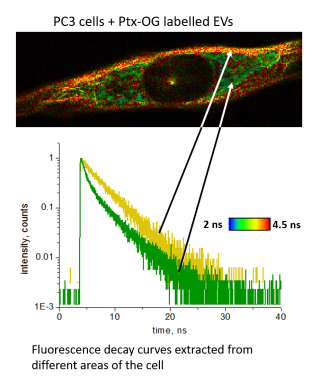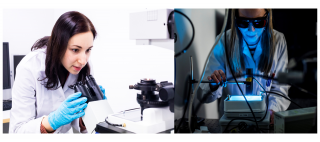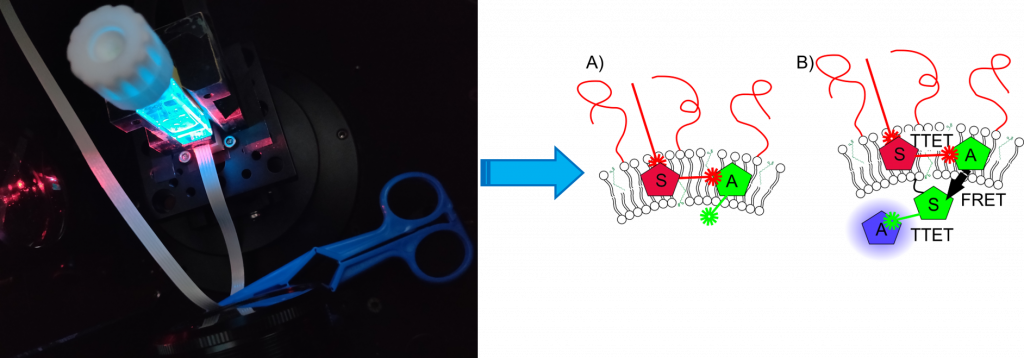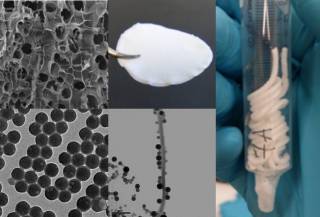 We are studying the formation, dynamics and stability of drug delivery nanoparticles by steady-state and time-resolved fluorescence methods. We are also developing methods to track and analyze the interactions of drug nanocarriers and living cells. The main tool is Fluorescence Lifetime Microscope, but we are also actively collaborating with many other laboratories and universities in order to have access a very wide range of instrumentation.
We are studying the formation, dynamics and stability of drug delivery nanoparticles by steady-state and time-resolved fluorescence methods. We are also developing methods to track and analyze the interactions of drug nanocarriers and living cells. The main tool is Fluorescence Lifetime Microscope, but we are also actively collaborating with many other laboratories and universities in order to have access a very wide range of instrumentation.
Since these techniques rely on fluorescence, the system we study must often be labeled by fluorescent probes. Thus, the labelling of NPs and the effect of the label in their function as well as the use of fluorescent probes in various systems are of interest to us.
Check our recent posters for more information:
Intramolecular charge transfer of molecular rotor reduces phototoxicity of BODIPY compound

We are also studying new ways to control drug release rate. These include iontophoresis, drug nanoparticles, liposomes, polymeric carriers, and other supramolecular systems. A particular area of interest is also light-triggered release from liposomal drug carriers.

 Nanofibrillar cellulose (NFC) has attracted a lot of attention as a natural alternative for these purposes. We have evaluated the potential of NFC for controlled drug delivery for several years.
Nanofibrillar cellulose (NFC) has attracted a lot of attention as a natural alternative for these purposes. We have evaluated the potential of NFC for controlled drug delivery for several years.
